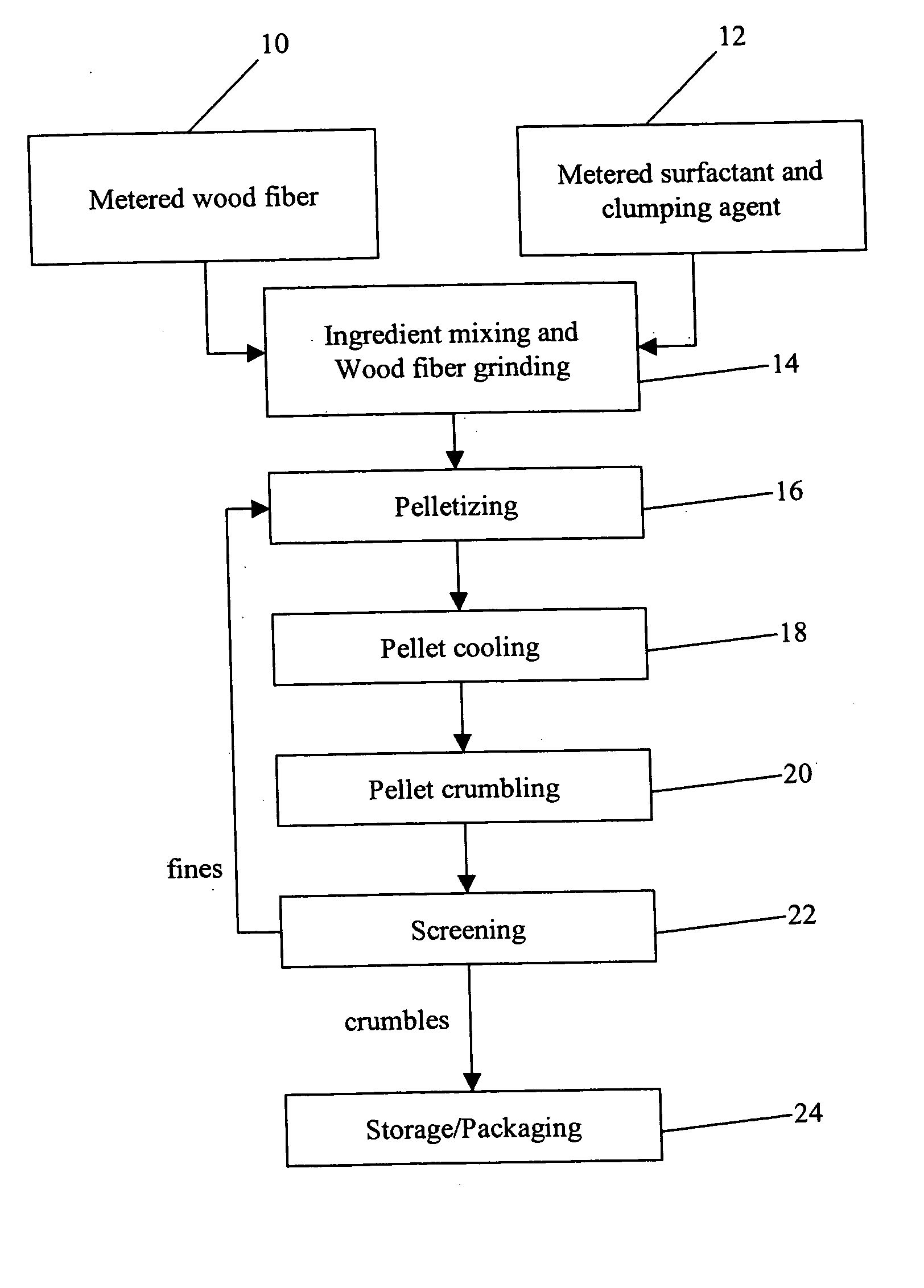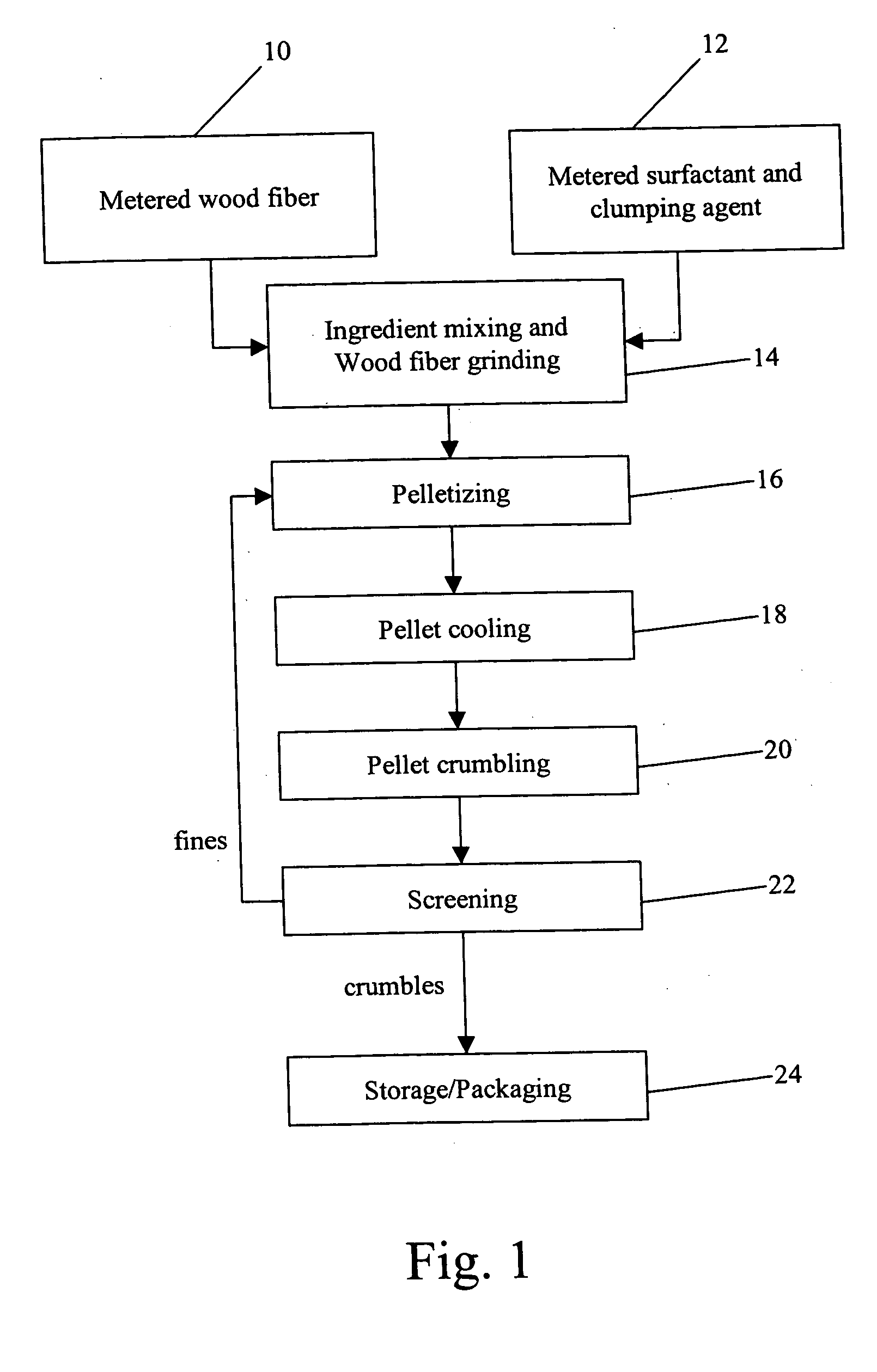Clumping animal litter and method for making same
a technology of animal litter and clumping, which is applied in the field of clumping animal litter, can solve the problems of limited minimum size of crumbling litter, and achieve the effects of improving the absorption quality of material, maximum effectiveness, and controlling cos
- Summary
- Abstract
- Description
- Claims
- Application Information
AI Technical Summary
Benefits of technology
Problems solved by technology
Method used
Image
Examples
Embodiment Construction
[0024] A preferred embodiment of the present invention may now be described. The preferred embodiment is formed of three constituent components: kiln-dried, yellow pine wood fiber, a nonionic surfactant, and one or more clumping agents.
[0025] Yellow pine is a commonly used lumber and pulpwood material, and lumber mill scraps of material are available for use in the production of litter at low cost. The yellow pine is preferably purchased as a kiln dried material, but will be in various sizes ranging from wood pieces to sawdust. The litter manufacturing facility should ideally be located near a dimension lumber mill operation or other facility that produces yellow pine scraps in order to reduce transportation costs.
[0026] The purpose of the non-ionic surfactant is to increase the rate of moisture absorption. Quick absorption reduces the likelihood that the material will stick to the sides or bottom of the litter pan, and also makes clumps easier to remove since they will be found m...
PUM
 Login to View More
Login to View More Abstract
Description
Claims
Application Information
 Login to View More
Login to View More - R&D
- Intellectual Property
- Life Sciences
- Materials
- Tech Scout
- Unparalleled Data Quality
- Higher Quality Content
- 60% Fewer Hallucinations
Browse by: Latest US Patents, China's latest patents, Technical Efficacy Thesaurus, Application Domain, Technology Topic, Popular Technical Reports.
© 2025 PatSnap. All rights reserved.Legal|Privacy policy|Modern Slavery Act Transparency Statement|Sitemap|About US| Contact US: help@patsnap.com


